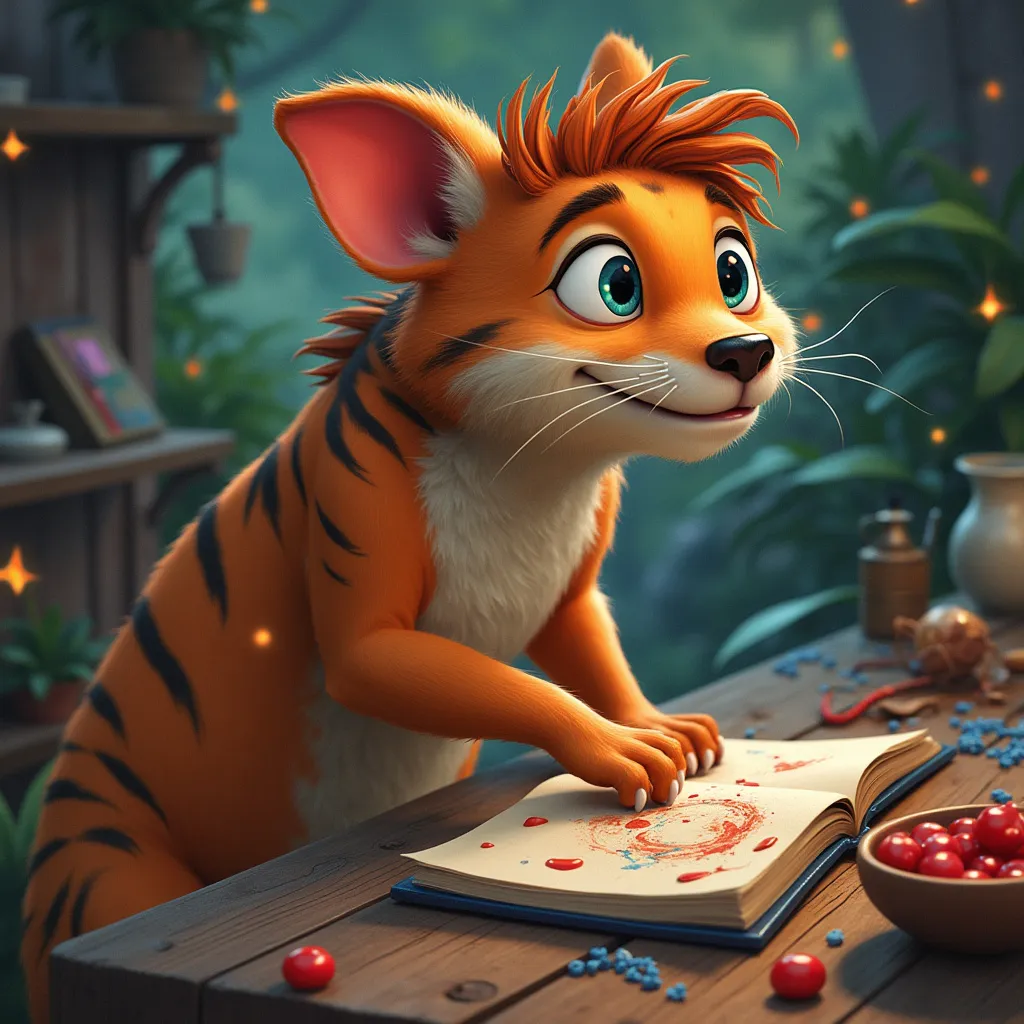The Magic of Animated 3D Characters: Bringing Stories to Life

In the ever-evolving world of animation, the creation of animated 3D characters has revolutionized how we tell stories, communicate ideas, and entertain audiences. From video games to animated films, and even marketing content, these fully-animated characters have become an integral part of our visual culture.
Whether you’re a professional in the animation industry or simply someone fascinated by the art of animation, understanding the magic behind animated 3D characters is essential to appreciate their impact on storytelling, creativity, and digital media. In this guest post, we’ll delve into how animated 3D characters are crafted, how they enhance storytelling, and why they are the future of visual communication.
The Art of Animation: A Brief History

Animation, in its various forms, has been captivating audiences for over a century. Before animated 3D characters took the stage, traditional 2D animation was the gold standard. Early pioneers like Walt Disney revolutionized the medium with hand-drawn animation techniques, giving birth to iconic characters such as Mickey Mouse and Snow White.
As technology advanced, so did the art of animation. The transition from 2D to 3D animation marked a significant leap forward in the industry. One of the most groundbreaking moments in this evolution was the release of Pixar’s “Toy Story” in 1995. As the first-ever fully animated 3D film, it showcased the incredible potential of 3D animation to create realistic, engaging characters and stories that resonate with audiences on a deeper level.
The Evolution of Fully Animated Characters
Fully-animated characters are at the heart of modern storytelling. These characters are brought to life through a combination of artistry and technology, merging creativity with computer-generated imagery (CGI). The process of creating fully-animated characters is intricate and involves several key stages:
- Concept Art: Every great 3D character begins as an idea, often sketched on paper or digitally. This stage involves designing the character’s appearance, personality, and overall look. Concept artists work closely with animators and directors to ensure the character aligns with the story’s themes and tone.
- Modeling: Once the concept art is finalized, 3D modelers use specialized software such as Blender, Maya, or ZBrush to create a digital model of the character. The model defines the character’s structure, including its anatomy, facial features, and proportions.
- Texturing: After the model is completed, the character needs texture. Texturing involves adding details like skin, clothing, hair, and other surface materials. This is crucial in making the character look realistic or stylized, depending on the animation’s goals.
- Rigging and Skinning: To animate the character, rigging artists create a skeleton, or rig, that serves as a framework for movement. Skinning attaches the 3D model to the rig, ensuring that the character’s movements look natural.
- Animation: Finally, the magic happens during the animation stage. Animators manipulate the rigged model to move, act, and express emotions. This stage requires precision and creativity to ensure the character’s movements align with the story’s pacing and emotional beats.
These steps collectively bring fully-animated characters to life, giving them the ability to move fluidly, express emotions, and interact with the world around them.
The Role of Animated 3D Characters in Storytelling
One of the most remarkable aspects of animated 3D characters is their ability to tell compelling stories. The characters themselves become storytellers, using their body language, facial expressions, and actions to convey emotion, humor, drama, or tension.
Creating Emotional Connection

In storytelling, characters are often the vehicle through which the audience experiences the plot. With 3D animation, characters can achieve a level of nuance and detail that was previously unattainable in traditional 2D animation. This ability to create lifelike emotions allows audiences to connect deeply with the characters, fostering empathy and emotional investment in the story.
Consider characters like Woody and Buzz Lightyear from “Toy Story” or Elsa from “Frozen.” These fully-animated characters are not just visual spectacles; they embody relatable emotions, challenges, and triumphs. Through their arcs, they teach valuable life lessons while entertaining audiences.
Enhancing Visual Narratives
Visual storytelling relies heavily on characters to drive the narrative forward. In animated stories, 3D characters help build immersive worlds. They don’t merely exist within the environment; they interact with it dynamically, making the story more believable and engaging.
The expressive capabilities of 3D characters extend beyond human likeness. Creatures, animals, and even inanimate objects can be animated to showcase unique personalities, breathing life into fictional universes. For example, in movies like “Zootopia,” a whole city of anthropomorphic animals becomes a living, breathing society with its own cultural norms, humor, and conflicts, all thanks to the mastery of animated character design.
The Future of Animated 3D Characters

As technology continues to advance, the future of animated 3D characters looks incredibly promising. Innovations like artificial intelligence (AI), motion capture technology, and real-time rendering are pushing the boundaries of what’s possible in animation.
AI and Machine Learning in Character Animation
AI and machine learning are set to revolutionize the way animated 3D characters are created and controlled. Currently, animators manually control characters’ movements, expressions, and behaviors, which is a time-consuming process. With AI, characters will be able to “learn” behaviors, making their movements more natural and autonomous. AI can simulate lifelike behaviors for things like crowd animations or background characters, reducing production time and increasing the quality of fully animated characters in large-scale productions.
Real-Time Rendering for Faster Production
One of the most significant advancements in animation technology is real-time rendering, which is being adopted in everything from animated movies to video game design. Real-time rendering enables animators to see the final output of their animated 3D characters in real-time, dramatically speeding up the production process. Traditionally, rendering high-quality animations would take hours or even days, but with real-time rendering, studios can create animated stories faster and more efficiently without sacrificing quality.
Animated Stories in Marketing and Advertising
Beyond movies and TV shows, animated stories have found a prominent place in marketing and advertising. Brands are increasingly using animated 3D characters to create engaging, memorable commercials and content. The use of animation allows brands to break free from the limitations of live-action shoots and create fantastical worlds where their products or services take center stage.
For example, insurance companies like Geico have successfully used animated mascots to establish a unique brand identity. The Geico gecko is an example of a fully-animated character that conveys brand messaging in a fun, memorable way.
Storytelling for Social Media and Digital Platforms
With the rise of social media and digital platforms, animated stories have become an essential tool for engaging audiences. Short-form animations, often featuring fully-animated characters, are used across platforms like Instagram, TikTok, and YouTube to tell quick, impactful stories. These animations are designed to be attention-grabbing and easily shareable, making them highly effective for building brand awareness and driving user engagement.
The Importance of Collaboration in the Art of Animation
Creating animated 3D characters is a collaborative process that involves multiple teams of artists, animators, writers, and technical experts. The synergy between these teams is what makes fully-animated characters so compelling. Each team member brings a unique skill set to the table, from the concept artists who envision the character to the animators who bring it to life with motion and expression.
In large animation studios like Pixar or DreamWorks, the collaboration extends to voice actors, musicians, and sound designers, all working together to create immersive, emotionally resonant animated stories.
Conclusion: The Ever-Growing World of Animated 3D Characters
The world of animated 3D characters continues to expand, offering endless possibilities for storytelling, creativity, and entertainment. Whether it’s a blockbuster film, a mobile game, or a short commercial, these fully-animated characters captivate audiences and communicate ideas in ways that transcend language and culture.
As the technology behind animation continues to evolve, so too will the potential for animated stories to move us, make us laugh, and challenge our imaginations. The art of animation is more than just creating characters; it’s about telling stories that connect with us on a deeper level, using the magic of technology and human creativity to push the boundaries of what’s possible.



